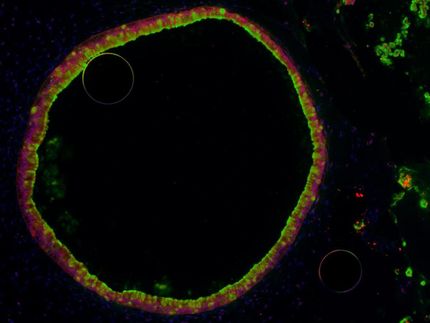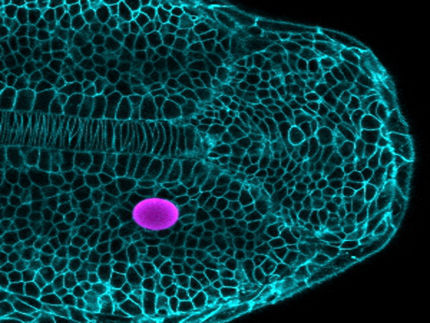UCI embryonic stem cell therapy restores walking ability in rats with neck injuries
Study supports expansion of first human trial to include those with cervical spinal cord damage
The first human embryonic stem cell treatment approved by the FDA for human testing has been shown to restore limb function in rats with neck spinal cord injuries – a finding that could expand the clinical trial to include people with cervical damage.
In January, the U.S. Food & Drug Administration gave Geron Corp. of Menlo Park, Calif., permission to test the UC Irvine treatment in individuals with thoracic spinal cord injuries, which occur below the neck. However, trying it in those with cervical damage wasn't approved because preclinical testing with rats hadn't been completed.
Results of the cervical study currently appear in Stem Cells. UCI scientist Hans Keirstead hopes the data will prompt the FDA to authorize clinical testing of the treatment in people with both types of spinal cord damage. About 52 percent of spinal cord injuries are cervical and 48 percent thoracic.
"People with cervical damage often have lost or impaired limb movement and bowel, bladder or sexual function, and currently there's no effective treatment. It's a challenging existence," said Keirstead, a primary author of the study. "What our therapy did to injured rodents is phenomenal. If we see even a fraction of that benefit in humans, it will be nothing short of a home run."
A week after test rats with 100 percent walking ability suffered neck spinal cord injuries, some received the stem cell treatment. The walking ability of those that didn't degraded to 38 percent. Treated rats' ability, however, was restored to 97 percent.
UCI's therapy utilizes human embryonic stem cells destined to become spinal cord cells called oligodendrocytes. These are the building blocks of myelin, the biological insulation for nerve fibers that's critical to proper functioning of the central nervous system. When myelin is stripped away through injury or disease, paralysis can occur.
Lead author and doctoral student Jason Sharp, Keirstead and colleagues discovered that the stem cells not only rebuilt myelin but prevented tissue death and triggered nerve fiber regrowth. They also suppressed the immune response, causing an increase in anti-inflammatory molecules.
"The transplant created a healing environment in the spinal cord," said Keirstead, who is co-director of the Sue & Bill Gross Stem Cell Research Center and on the faculty of the Reeve-Irvine Research Center – named for late actor Christopher Reeve, who became a quadriplegic after a cervical spinal cord injury.
Other news from the department science

Get the life science industry in your inbox
By submitting this form you agree that LUMITOS AG will send you the newsletter(s) selected above by email. Your data will not be passed on to third parties. Your data will be stored and processed in accordance with our data protection regulations. LUMITOS may contact you by email for the purpose of advertising or market and opinion surveys. You can revoke your consent at any time without giving reasons to LUMITOS AG, Ernst-Augustin-Str. 2, 12489 Berlin, Germany or by e-mail at revoke@lumitos.com with effect for the future. In addition, each email contains a link to unsubscribe from the corresponding newsletter.























































